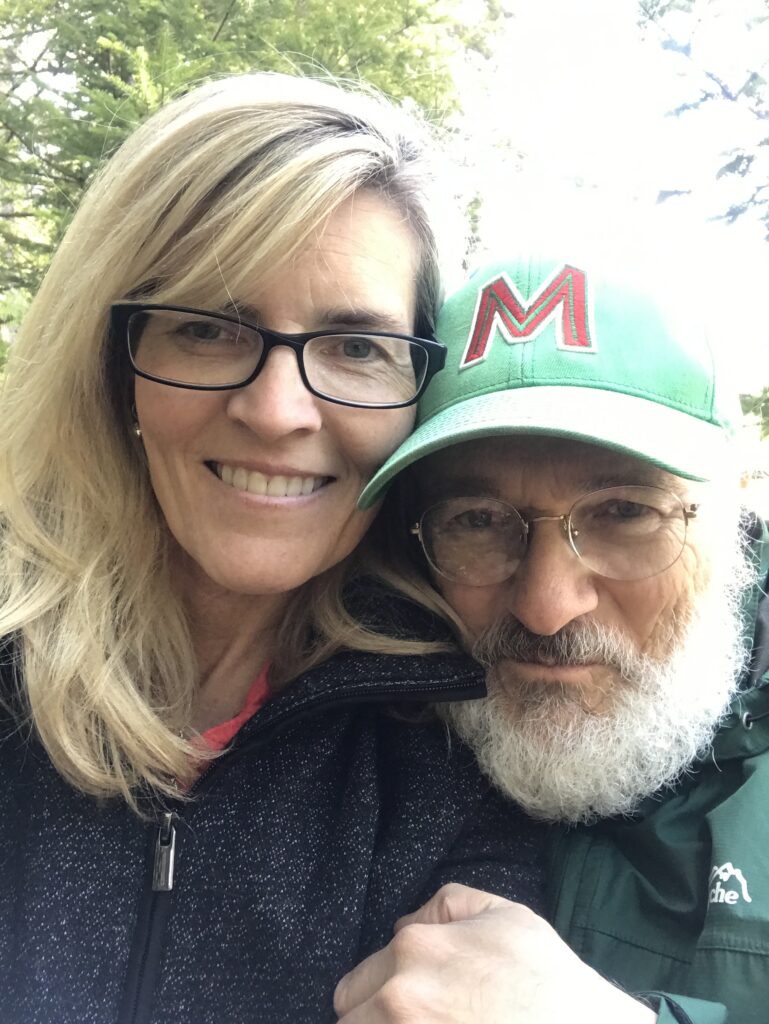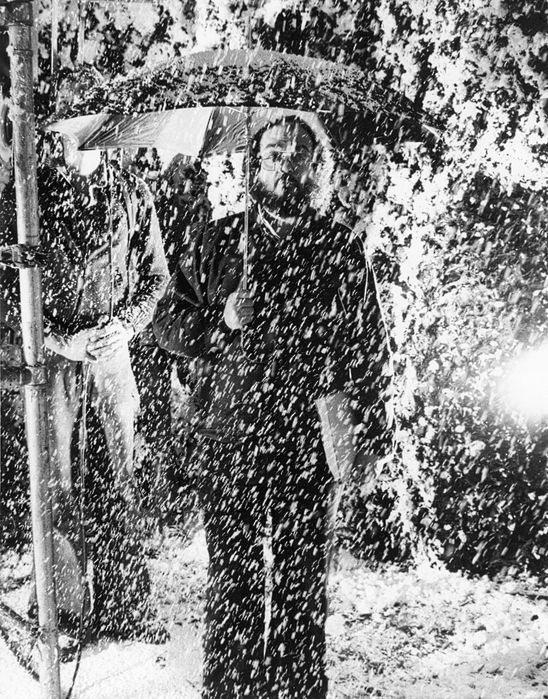FIRST OF THREE PARTS: AFFIRMATIVE ACTION — A MASSIVE LIBERAL FAILURE … THE WRONG POLICY AT THE WRONG TIME IN PITTSFIELD … Part 1
By DAN VALENTI
PLANET VALENTI News and Commentary
First of Three Parts
(FORTRESS OF SOLITUDE, WEDNESDAY, APRIL 2, 2014) — Will Singleton says Pittsfield needs a new affirmative action policy.
Will Singleton, well intended as he may be, is wrong. The city doesn’t need affirmative action. The simple reason is that affirmative action doesn’t work. It doesn’t even have a neutral effect, like chicken soup when you have a cold or prayer when you need a favor. As a blunt strategy of social engineering in a situation that, at most, needs a fine precision instrument, affirmative action actually causes more problems of the sort it professes to remedy, for the simple reason that it makes skin color the predominant factor in the selection process. It thus perpetuates the very social poison it seeks to address.
Social engineering seeks to artificially redesign through arbitrary redistribution the make-up of various cultural institutions through a benign form of coercion. It does it through law or policy that forces favor where it has not existed. It attempts to change what certain constituents (not all) perceive as an uneven playing field by tilting it the other way. It is usually well intentioned, but we all know about good intentions and the dire destination of the roads they pave.
Having run out of “vision” in response to the actual problems faced by the dwindling number of tax-paying, employed citizens, the city of Pittsfield under Mayor Dan Bianchi has tried hard to divert the attention of the otherwise-bedraggled citizens. He has employed many means to do this, from the trivial, embarrassing, and absurd (posting the actual number of ribbons he has cut and certificates he has awarded on his website) to the downright fraudulent (teasing voters with the pretense of a vision when there hasn’t been one). To put it more bluntly, Bianchi has yet to convey any sense that he either knows what he’s doing or cares.
Mayor Can Be Called on Carpet Over His Attitude Toward Race
One of the most recent ploys has been his forced advance into an abject failure of social policy: Affirmative Action. His clumsy approach even led to the resignation of his director of administrative services. That Bianchi has already picked Mary McGinnes‘ successor, Julie Sabourin, weeks ago only strengthens the case to be made against the mayor on the question of race.
Pittsfield citizens and all of Berkshire County can now witness the sad spectacle of what happens to a mayor when his sap gets drained. Lacking both a political backbone and an independent will, Bianchi has half-heartedly backed a progressive (pun intended) takeover by those who would pretend that — in a city so neglected by its leaders — one can find solutions in a fake, pseudo-mathematical formula that magically produces the correct mix of color in official city positions. On affirmative action, he’s afraid to speak against it, likely because he has almost no credibility in the local black community, but he’s also not committed enough to care if it takes root.
In the discussion on affirmative action, what the “Well Meaners” never address, of course, is that the city of Pittsfield does not discriminate on the basis of race. Blacks (we will not demean people of color by using the term “African-Americans”) are free to do any number of things, equal to their white (or yellow, red, green, or polka dotted) brothers and sisters. Among these are the free pursuit of life, liberty, and the pursuit of happiness in the form of education, employment, personal betterment (reading books from the library, for example), church going, entertainment, and all the rest of it.
It’s true that blacks are underrepresented in Pittsfield public employment. The problem is that in addressing this, the local black community and too many politically correct brethren want to engineer a “solution” rather than to take an honest look at why blacks do not avail themselves of their opportunities.
Affirmative Action is not needed. With that in mind, THE PLANET presents this guest column, in three parts beginning today and running through Friday, by Tanner Colby. We hope you enjoy it or at least find it thought provoking.
——- 000 ——-
The Massive Liberal Failure on Race

I.
In 2009, I attended the NAACP’s 100th annual convention at the Midtown Hilton in New York. Not just the centenary celebration for the nation’s oldest civil rights organization, this was also the group’s first convention under our newly inaugurated black president. The theme of the week’s events was to pay homage to the great civil rights victories of the past while at the same time defining a new mission for the next century. But on the night NAACP President Benjamin Todd Jealous took the stage for his big speech, when the subject turned to affirmative action, he didn’t sound like he was charting a new course so much as doubling down on the orthodoxy of the past. “The only question about affirmative action,” Jealous declared, “isn’t whether or not we need the hammer. The only question is whether or not the hammer is big enough!”
The line was met with thunderous applause. At the time, this didn’t really stand out to me, because, like a lot of well-intentioned but minimally informed white liberals, I believed in affirmative action. I didn’t have terribly strong convictions about it, but given America’s history it generally seemed like “the right thing to do.” That was five years ago. Then, in the course of writing a book about the history of the color line and our efforts to erase it, I took a closer look at the origins of affirmative action, and its results. Having done so, I’m a believer no more.
In part because of recent Supreme Court cases like Fisher v. Texas, the current national conversation about affirmative action has focused mostly on its use in college admissions, but my focus here will be on affirmative action in the white-collar workplace, the failure of which I observed up close during my years in the advertising industry. Race-conscious policies in college admissions and corporate hiring are different creatures, with different pros and cons, but I came to see that they also share some common, troubling flaws.
When I think back now to the rousing applause affirmative action earned at that Hilton ballroom, I can’t help but wonder why, 45 years down the line, liberals like Jealous are still so fervently devoted to a program so plainly inadequate and ill-conceived from the start. Having botched the effort to integrate American schools through the overzealous misuse of an otherwise valuable instrument, the school bus, the left’s second great blunder on race was pinning the economic fortunes of black America on affirmative action.
II.
Proponents of affirmative action tend to glorify the program by lumping it in with the great liberal victories of the civil rights movement. The phrase “affirmative action” first appeared in President Kennedy’s Executive Order 10925, which called for “affirmative action” to be taken to ensure people were employed “without regard to their race, creed, color, or national origin.” And Lyndon Johnson is usually given credit for enunciating the principles of affirmative action when he called for reparative economic justice for black America in his famous “To Fulfill These Rights” speech at Howard University, saying, “You do not take a person who, for years, has been hobbled by chains and liberate him, bring him up to the starting line of a race and say, ‘You are now free to compete with all the others,’ and still justly believe that you have been completely fair.”
But neither Kennedy nor Johnson ever implemented anything resembling what we now describe as affirmative action—i.e., quotas and set-asides—on the economic front, largely because the Democratic party was beholden to Big Labor, whose unions were adamantly opposed to quotas of any kind. So while the great liberal crusade of the 1960s produced victories in the area of civil rights, it did little in the way of producing actual jobs for black Americans; in some states, black unemployment under Kennedy and Johnson actually went up, hence the frustration that exploded in the urban riots of Watts, Newark, and elsewhere. When Vietnam forced Johnson out of office, the task of implementing a program of reparative economic justice for the victims of slavery and segregation fell to our 37th president, Richard Milhous Nixon.
That Richard Nixon was racist is well beyond dispute—he believed that, moral objections to abortion aside, the practice was justified in the case of mixed-race pregnancies. When giving instructions to the aide who scheduled his appointments and photo ops, Nixon said the Oval Office calendar should have “just enough blacks to show that we care”—setting a precedent for Republican racial engagement that stands to this day. But Nixon wasn’t just racist in the sense of thinking blacks inferior; he was racist in the sense that he subscribed to an actual taxonomy and hierarchy of race—the idea that different groups possess inherent qualities. Asians are smart and industrious. Jews are crafty but lack moral fiber, and so on. When the first wave of studies were published purporting to show that blacks have lower IQs than whites, Nixon, in a conversation with domestic aide Daniel Patrick Moynihan, said he “couldn’t agree more” with the findings. The president was quite generous on the subject of what black people were good at: “Athletics isn’t a bad achievement. You look at the World Series. What would Pittsburgh be without a hell of a lot of blacks?” But he was far less charitable when it came to black talent in other areas: “… when you get to some of the more shall we say profound, rigid disciplines, basically, they have a hell of a time makin’ it. … In terms of good lawyers, even though a lot of them go to law schools, I mean, it is not really their dish of tea.”

Racist as he may have been, Nixon was also a pragmatist. With America’s cities beset by riots, he knew he had to take steps “not to have the goddamn country blow up.” Blacks needed jobs. And as someone who had grown up poor, Nixon did believe in the basic principle of what he called a man’s “right to earn.” Everyone, black or white, had a right to earn a decent living for his family. Nixon just had a limited opinion of what blacks were capable of earning. Another thing the president told Moynihan was that it was his job as president to be aware of the fact that blacks have “basic weaknesses,” and that those weaknesses needed to be taken into account when it came to formulating policy.
The way in which affirmative action was implemented speaks volumes about the motivations behind it. Nixon’s first task upon taking office was to resolve the impasse between civil rights leaders and skilled labor unions. In his first address to Congress, the president announced what became known as the Philadelphia Plan, which imposed goals and timetables for race-based hiring in the city’s unions. Prior to the Philadelphia Plan, under Kennedy and Johnson, affirmative action had always meant to take affirmative action to ensure discrimination was not taking place. Now, affirmative action meant imposing racial preferences and quotas. After its launch in Philadelphia, the program was rolled out in dozens of other cities nationwide. In the meantime, the White House was busy stuffing racial-preference policies into the federal bureaucracy wherever it could find room. In the spring of 1969, Nixon expanded affirmative action mandates from government procurement contracts and applied them to any institution that received any federal funds of any kind, which brought universities, research institutions—basically everyone—into the fold. Then Nixon issued Executive Order 11478, which called for affirmative action in all government employment, bringing huge numbers of black workers onto the federal payroll. Racial preferences, as we know them today, were now sewn into the fabric of the country.

And affirmative action “worked.” The most immediate and measurable impact was in government hiring. Blacks had always enjoyed relatively better employment prospects in the public sector, and affirmative action greatly enhanced that. By the early 1970s, 57 percent of black male college graduates and 72 percent of black female college graduates were employed in government positions. The private sector also went on a hiring binge. Impelled by the fear of more urban riots, the Fortune 500 launched a flotilla of affirmative action programs aimed at getting as many black hires in the door as quickly as possible. After decades of economic stagnation, between 1969 and 1972, total black income rose from $38.7 billion to $51.1 billion, a 32 percent jump in just three years.
Richard Nixon put more money in black wallets than JFK, LBJ, and MLK combined. While they never embraced Nixon, black Americans and their white liberal champions fell in love with quotas and set-asides. Many of the moderate and liberal Republicans in the White House had faith in affirmative action, too. Nixon’s Secretary of Labor George Shultz, upon his nomination, acknowledged that black unemployment was the most pressing labor issue in the country, and believed that the Philadelphia Plan would offer a useful model for cities across the country. Even some conservatives were on board. Prominent Nixon-supporter William F. Buckley called for “a pro-Negro discrimination” in order to address the problem of unemployment.
The president, however, felt differently. Just weeks after calling the Philadelphia Plan “historic and critical” in Congress, Nixon jotted a note to domestic aide John Erlichman calling it “an almost hopeless holding action at best,” saying “let’s limit our public action and $—to the least we can get away with.” Nixon’s primary concern in the Oval Office was to make his mark as a great foreign policy leader. Vietnam, China, the Soviet Union—these were his main preoccupations. He wanted the home front happy and humming along so that he’d be free to spend his political capital overseas, and his approach to the volatile issues of race reflected this. Staunch opposition to school busing and fair housing would appease suburban white voters. Affirmative action on the jobs front would appease middle-class black voters, end the riots threatening corporate America’s bottom line, and generally keep the racial question tamped down long enough for Nixon to win re-election in ’72.
Given the immediate positive impact that affirmative action had, it was perfectly reasonable for liberals to want to believe that it could be, at long last, an answer to economic discrimination and structural inequality. But it wasn’t. Not remotely. For starters, the quotas and mandates put in place were almost comically easy to evade. The skilled labor unions required to admit blacks engaged in practices known as checkerboarding (putting all the black hires on government-contracted job sites while ignoring the quotas everywhere else) and motorcycling (shuffling black hires from job site to job site depending on where federal inspectors were slated to show up). Quotas may have seemed like a positive development, and they did produce some jobs, but they also turned black employment into a numbers game—and gave employers a way to game the numbers.
Affirmative action in state, local, and federal government offered decent jobs with decent wages, but the side effect of all this government hiring was to relieve the white collar private sector from having to truly confront the issue in its own staffing. For the minimal hiring it did do, corporate America made sure to meet its new quotas in the least disruptive way possible, hiring blacks for back-office roles in the accounting department, for example, or creating make-work departments that had no power and did nothing, like the community outreach or “social responsibility” department. Again, these were decent jobs with decent wages, but they diverted blacks from the business units where real decisions were made. Affirmative action offered the illusion of reparative justice wrapped up in the rhetoric of empowerment, but its net result was to absorb and neutralize black demands for equality, not fulfill them.

Another effect of affirmative action was that it created a short-term labor shortage in the black middle class, because that’s who affirmative action was designed to help. In Nixon’s taxonomy of race, there was a clear division between “the good blacks” and the rest of urban America. “There are 35 percent of blacks we can do good with,” he told his staff. And it was squarely at this group that he aimed his policies. If you look at the areas where affirmative action was implemented—college admissions, corporate hiring, minority business loans, skilled labor unions, government office jobs—you’ll notice that most of them aren’t really things that will help you if you’ve never graduated from high school.
The urban poor were hopeless, just “little black bastards on the welfare rolls at $2,400 a family,” Nixon said, and for this group his policy aims were clear. Meeting notes taken by Nixon’s Chief of Staff H.R. Haldeman detail the president’s directives:
Shift of policy of helping and backing the strong—instead of putting all effort into raising the weak
build incentives for the strong + positive
give the fellowships to them instead
don’t aim manpower programs at unemployed black male teenager …
For the unemployed black male teenager, Nixon had a very different social program to offer. During his 1968 campaign, against the backdrop of violent riots in America’s inner cities, the candidate made repeated and thinly veiled calls for “law and order,” criminalizing the urban poor in the nation’s mind and promising his silent majority that lawbreakers would be dealt with harshly under his administration. Once in office, Nixon launched his now infamous “War on Drugs,” planting the seeds that have grown, decades later, into a system of mass incarceration—something all-too-familiar to the unemployed black male teenager of today. As the 1970s progressed, the black underclass was increasingly left behind while the black middle class was movin’ on up—not to the East Side, typically, but to majority black suburbs where they continued to be isolated from the schools and social networks that offered access to greater economic opportunity.
Did millions of people do well under affirmative action? Yes. A bribe only works if you actually give somebody something. But the benefits that accrued to black America under affirmative action could almost be considered a byproduct of the program’s actual endgame: to give black people just enough to stop rioting and leave the white establishment to go about its business. While some black people used quotas and set-asides as a foothold to climb into genuine positions of power, the effect of affirmative action overall was to funnel upwardly mobile blacks into a separate employment pipeline where their aspirations were held in check, where they exercised very little authority, and where their progress depended on government intervention. Thanks to affirmative action, the black middle class was now vested in the very system the civil rights revolution had sought to overthrow.
——- 000 ——-
TOMORROW: PART II
————————————————————————————————-
“When lovely woman stoops to folly, / And finds too late that men betray, / What charm can soothe her melancholy? / What art can wash her guilt away?” — Oliver Goldsmith, “Song” from “The Vicar of Wakefield,” (1766).
“OPEN THE WINDOW, AUNT MILLIE.”
LOVE TO ALL.















As with almost all of the liberal sacred cows, the closer get to them, the more they stink.
I have to disagree. Affirmative action is needed when the city obviously has closed to the doors to people of color.
Also Planet a friend at the Eagle says you gave them the tip about NARH filing Chap 7 on Monday and some other information. Did you, just curious? I mean its good and all, classy I mean.
I had a tough time watching the best picture movie “12 Years of Slave” because it was so unjust, violent, and wrong. Our nation was founded on Slavery! Our Founding Fathers wrote of Liberty, but they also owned Slaves. What a double standard!
I thought it unjust that slaves were rounded up by their own peers and shipped off at times. Couldn’t they have done something to protect them?
If you look at the freedoms really available to you, it’s obvious that 99% of people have always been, always will be, and indeed want nothing more than to be, slaves. Notice that after being liberated but still subject to discriminatory laws few blacks wanted to go back to Africa: being transported to the USA as slaves was the best thing that had happened to them
Wilson, you’ve left me speechless and, once again, stunned at what people will say or write anonymously.
How many teachers have disabilities? blind? Deaf/Hoh? ASD? shouldn’t those students have teachers they can relate to also? for some reason we only focus on one or two ethnic groups instead of the whole spectrum and by doing that we are perpetuating the same thing we are trying to stop. It’s a catch -22. Just give the jobs to the best candidates.
White men should not judge anymore about affirmative action than they should about abortion.
Since it has nothing to do with us we also can positively judge it. Black governments and organizations are welcome to implement it…and reap the total failure
I still say that the problem with Pittsfield hiring is that everybody is left out of the picture unless you are someone with roots or connections in the community. Nepotism and other forms of favoritism are alive and well in Berkshire County and explains why so few blacks, hispanics and even many whites without the proper connections do not get the good jobs. The good jobs are going to a small group of well connected individuals and the majority of them are white. Many of these well connected people were not hired based solely on their qualifications and whether they were the best person for the job.
Right you are Pat. Blacks are discriminated agaisnt by city of Pittsfield but so are whites, hispanics and anyone else who doesn’t have connections. The mayor is following suit for example the hiring of a bigtime supporter Ms Sabourin.